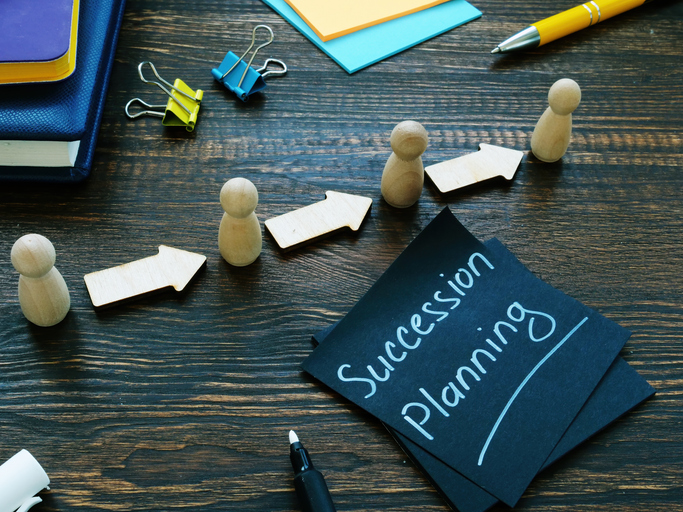When I founded PushFar, I never really thought too far ahead about what ‘the end’ might look like. Like most entrepreneurs, I was focused on building, growing, firefighting, and building again. I knew that someday an exit would be amazing, if we could achieve it, but didn’t think too much about it. That was, until we were in the midst of the acquisition – and then I couldn’t think of anything else. In this article I am going to share a few key considerations for entrepreneurs, post-exit, and the experiences I have been through.
In 2023, after a whirlwind few years, PushFar was acquired by a brilliant private equity firm in London. It was a moment that should have felt like crossing the finish line of a marathon. And, in a way, it did. But then again, it didn’t. I stayed with the business for 18 months post-acquisition, as part of a transitional phase – something quite normal for exiting founders. But by the end of January 2025, my time with PushFar officially ended. This, in itself, can feel tricky to navigate. An ‘exit’ is rarely instant. It can drag on for months or, more often, years.
The post-exit ‘what now?’ moment
There’s a romantic idea that, once you sell your company, you’ll spend a few years on a beach sipping cocktails, travelling the world, or simply enjoying ‘time off’. I’ll admit – I flirted with the idea. I even told myself that once I exited that I would take a year off, rest and relax, before figuring out what I wanted to do next. However, I realised through the process, that I am not very good at sitting around, doing nothing.
Here’s the truth I feel I learned the hard way: when you’ve spent years pouring every ounce of your energy, passion, and creativity into building something from scratch, doing nothing isn’t relaxing – it’s almost the opposite!
Restlessness? Figure out what’s next
In those early post-exit days, I felt untethered. Not because I was unhappy, but because something was missing. There was a quiet restlessness creeping in. I had spent the better part of a decade waking up every morning with a clear sense of purpose – customers to support, a team to guide, fires to put out, ideas to test. And suddenly, that structure – and that meaning – was gone. Quickly, I realised that I would have two options after I left PushFar. The first would be to take some time off, the second would be to build again. The answer was clear to me: build again.
The knowledge that once my time at PushFar came to an end, would also be the start of a new adventure and venture for me, gave great comfort, reassurance and an immediate sense of purpose once more. So, my first recommendation to anybody planning an exit or going through one, would be to ensure you have considered what the next chapter looks like.
Why the early days are the best days
One of the biggest things I realised in those quiet moments post-exit was that the part of the journey I loved most – and missed deeply – was the early stage of building. The scrappy, admittedly slightly chaotic, highly creative part where ideas are full of possibility. That’s where I thrive. It’s where I’m happiest. And, as a result of that, it is probably where I do my best work.
When I started PushFar, I was driven by a desire to solve a real problem – helping people connect through mentoring. With uRoutine, it’s a similar itch. I’m fascinated by how routines shape success and accountability ensure we deliver. Only this time around, I’ve got some real experience, to do it with more confidence and clarity.
Staying busy or staying fulfilled
A couple of fellow founders have asked me why I didn’t take more time off. Sometimes, even now, I ask myself, why I didn’t. And yet, what I’ve come to understand is that there’s a difference between being busy and being fulfilled. I didn’t start something new because I was afraid of stillness – I started something new because I found an idea that genuinely excited me. I think, as entrepreneurs, we’re wired differently. We need problems to solve. We need purpose. That’s not to say we don’t need rest – we do. But there’s a difference between rest and inertia. Rest is recharging. Inertia is stagnation.
If you’ve just exited, or you’re approaching that milestone, my advice would be yes, take some time. Reflect. Celebrate. But also listen closely to what energises you. It might not be another start-up. It might be mentoring, investing, writing, or volunteering. I even dabbled with the idea of following another career path altogether! But whatever it is, make sure it’s something that fills your tank, not just your calendar.
Learning from the first ride
Building uRoutine, for me, isn’t just about doing it all over again – it’s about doing something new and doing it better. From the start, I have been acutely aware of the lessons I learned from PushFar: the importance of hiring slowly and intentionally, the value of mental wellbeing, the slow cash-burn, the need for clear boundaries, and the absolute magic of a small, passionate, aligned team.
I’ve also realised that success doesn’t have to look like the traditional metrics: revenue, headcount, exits or, in particular, fundraising. For me, success with uRoutine means building a product that genuinely helps people, that people love using, and – as clichéd as it may sound – enjoying the journey along the way.
The emotional undercurrent
This is clearly different for every founder – but a lot of people talk about selling a business as an emotional moment. I think that entirely depends on how you viewed the business in the first place. I always viewed PushFar as a business, rather than an identity. Albeit a business for good, it was a business nonetheless. So, I didn’t experience any sadness or emotional pull in the exit. Clearly, lots of founders do find it emotional, and that’s understandable. I asked myself, very consciously, about how I thought I would feel parting with it, before we went through the acquisition. I would encourage any founder looking at exiting to do the same. There’s no going back if you change your mind.
Forward is the only way
So, here I am – back at square one, sort of. Different product, different market, but the same buzz. The same excitement of seeing something come to life from nothing. And I couldn’t be happier.
If you’re facing your own post-exit moment, know this: it’s okay to feel lost. It’s okay to change your mind. It’s okay to not want “time off”. The post-exit rollercoaster is real, and no two rides are the same. But if you listen to what lights you up, and follow that thread, you’ll find your next chapter – and it might just be your best yet.
Ed Johnson is the founder of uRoutine.
Read more
How strategic partnerships can lead to a natural exit path – Get your long-term business strategy in place by forming strategic partnerships. Here’s everything you need to know
The business case for succession planning before you are ready to exit – Business succession planning is crucial, even way before you think you’ll need to. Here’s why you should be getting your exit in place
7 essential steps to guiding your business to private equity exit – Alexis Sikorsky, founder of Sikorsky Consulting, guides us through the essential steps to securing a profitable private equity exit






